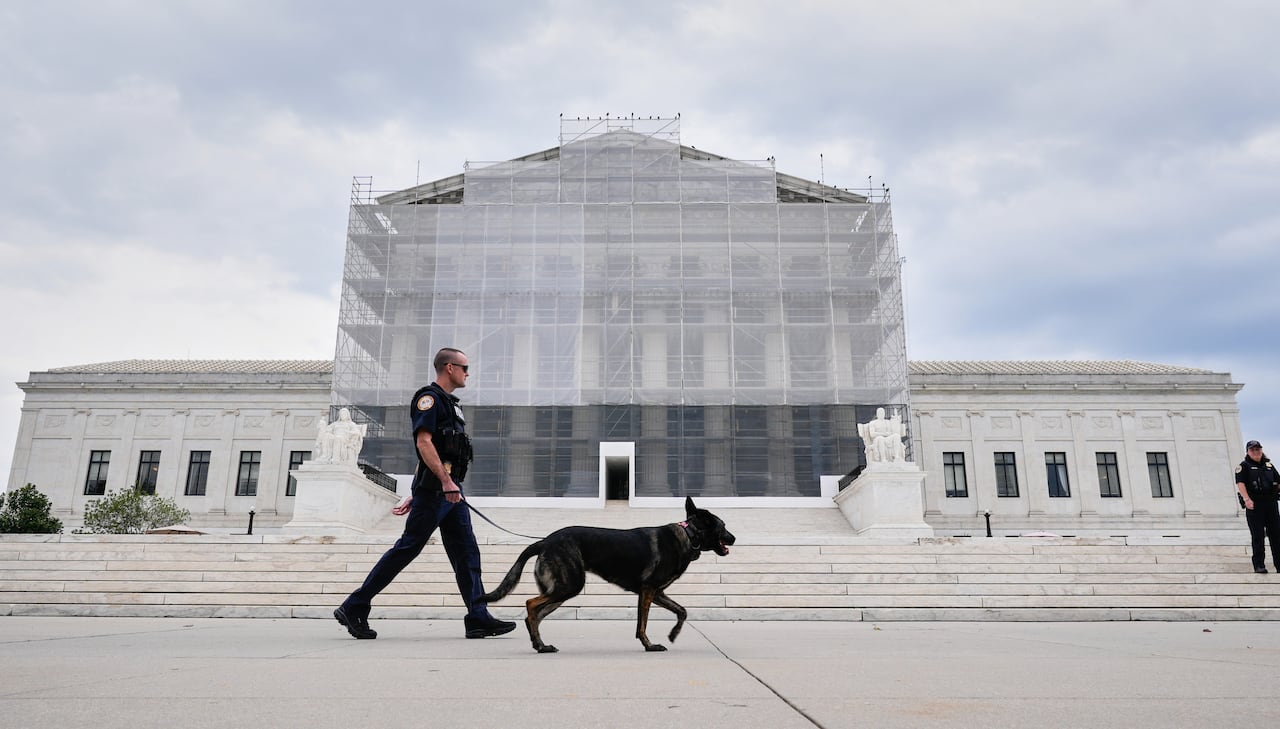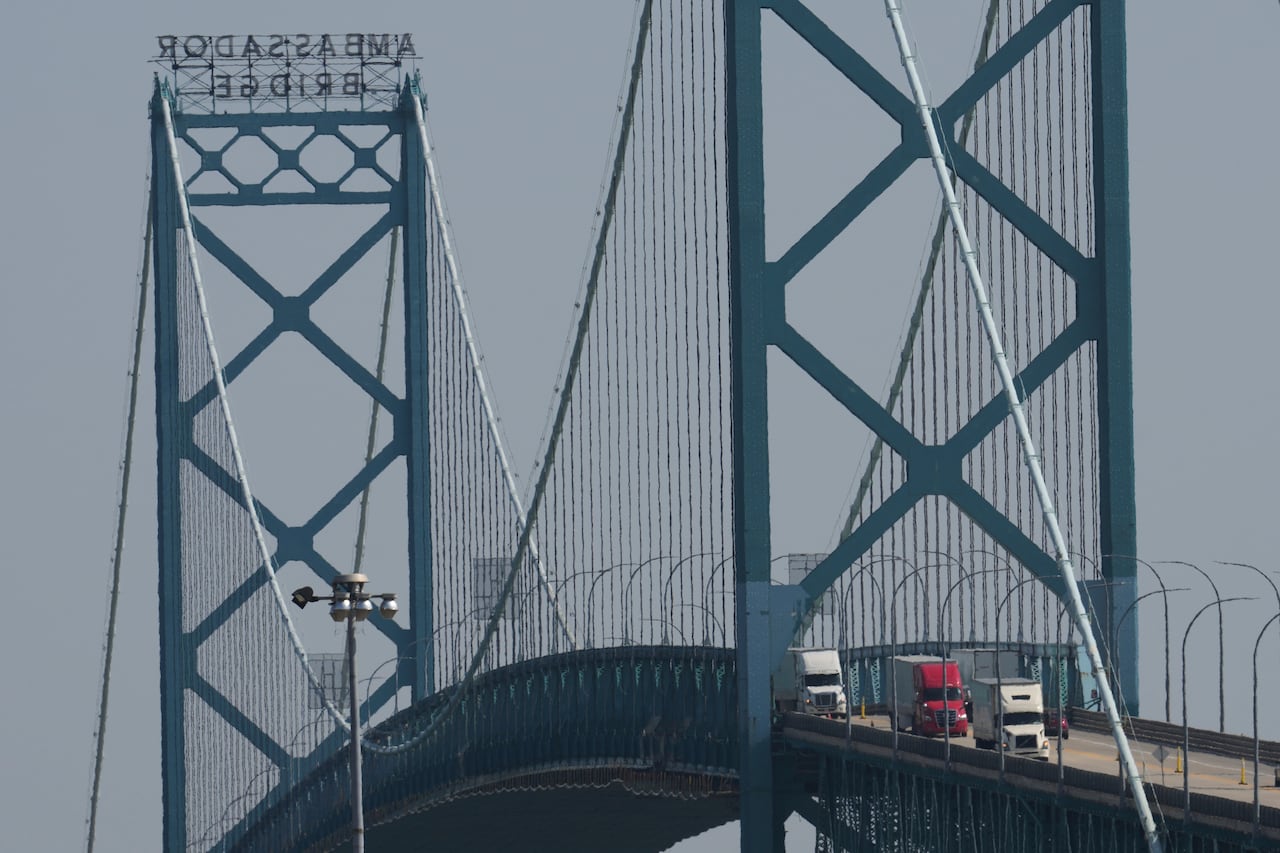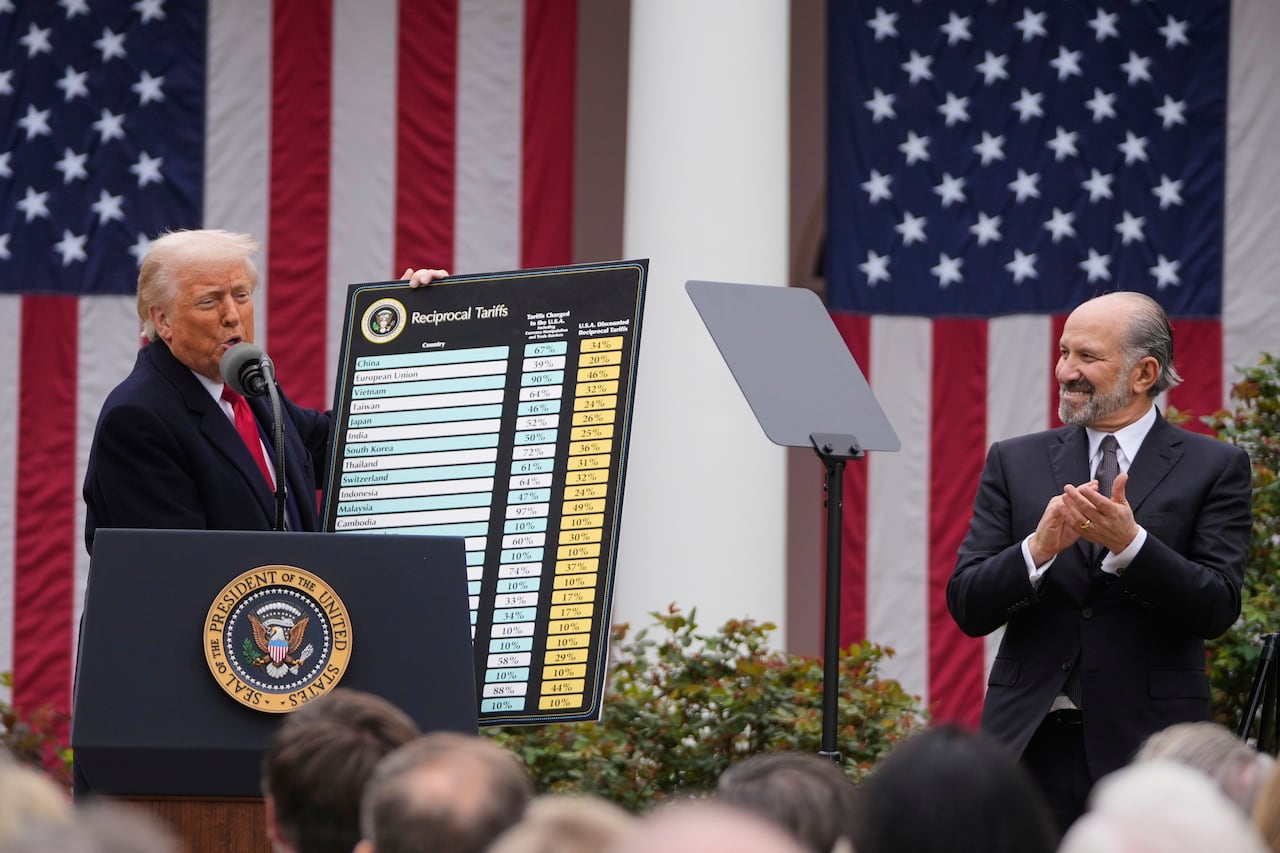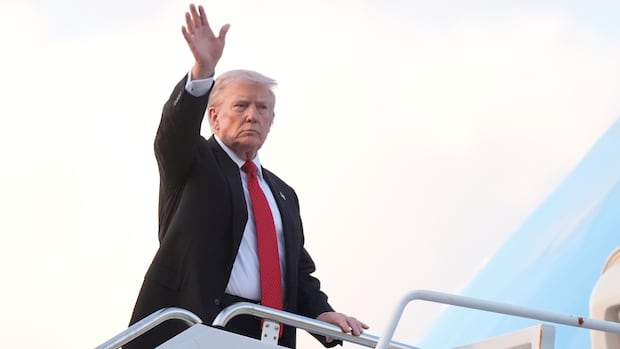U.S. President Donald Trump’s tariff regime faces its biggest legal test yet this week.
The U.S. Supreme Court will hear arguments Wednesday on Trump’s unprecedented use of an emergency powers law to slap broad-based tariffs on imports from Canada and other major trading partners.
On social media Trump has called it “THE MOST IMPORTANT CASE EVER” and repeatedly claimed that the Ontario government’s anti-tariff ad campaign featuring an address by the late Ronald Reagan was an attempt to interfere with the case.
Many billions of dollars are at stake. If the administration loses in the Supreme Court, it may have to return tariffs paid by importers since the spring and will forgo a source of revenue that Trump has claimed is making America rich again.
Elizabeth Wydra, president of the Constitutional Accountability Center, a legal advocacy nonprofit in Washington, D.C., says the stakes are also high for the functioning of U.S. democracy and for the Supreme Court.
“They have so far in this second Trump administration been very much acquiescent in Trump’s power grabs,” Wydra said in an interview with CBC News. “From a separation-of-powers, constitutional standpoint, the question is huge.”
 A U.S. Capitol police officer patrols outside of the U.S. Supreme Court on Sept. 24. The court will hear oral arguments in the tariffs case on Wednesday. (Mariam Zuhaib/The Associated Press)
A U.S. Capitol police officer patrols outside of the U.S. Supreme Court on Sept. 24. The court will hear oral arguments in the tariffs case on Wednesday. (Mariam Zuhaib/The Associated Press)
Under the U.S. Constitution, only Congress has the power to tax or tariff, unless it passes a law that gives the president that authority.
Trump used a 1977 law called the International Emergency Economic Powers Act (IEEPA) to levy broad-based tariffs over a pair of what he declared to be national emergencies: the cross-border trafficking of fentanyl (for tariffs on imports from Canada, Mexico and China) and the deep trade deficits the U.S. has with dozens of countries around the world (what Trump called his “Liberation Day” tariffs).
What the case hinges on
Whether IEEPA gives the president the legal authority to impose tariffs in this way and for those reasons is the fundamental issue before the court.
The case does not test the long-established power of a president to impose tariffs sector by sector, as Trump has done with imports of steel, aluminum and automobiles, to protect specific U.S. industries.
More than 40 organizations, individuals and interest groups have submitted “friends of the court” briefs ahead of Wednesday’s hearing in an effort to sway the justices.
Nearly all of those submissions, also known as amicus briefs, urge the court to rule that Trump’s use of IEEPA is illegal.
 Trucks enter the U.S. across the Ambassador Bridge from Windsor, Ont., on Aug. 7. (Paul Sancya/The Associated Press)
Trucks enter the U.S. across the Ambassador Bridge from Windsor, Ont., on Aug. 7. (Paul Sancya/The Associated Press)
The list of those who’ve submitted legal briefs opposing the tariffs crosses a wide range of ideology, geography and profession, including some high-profile names:
Carla Hills, the former U.S. trade representative and lead negotiator of NAFTA in the George Bush administration.Joseph Stiglitz, the Nobel Prize-winning economist, whose name is on a brief from a group of academics. Ben Bernanke and Janet Yellen, who served as successive chairs of the Federal Reserve Board from 2006 to 2018, are among the signatories of a brief from economists.
There are also friend of the court submissions from:
The submissions by the Trump administration’s legal team paint a completely different picture.
The tariffs “are necessary to rectify America’s country-killing trade deficits and to stem the flood of fentanyl and other lethal drugs across our borders,” says the main submission to the court from Solicitor General John Sauer on behalf of the Department of Justice.
Sauer says that IEEPA empowers the president with “a broad range of tools” to address international emergencies, and tariffs should not be excluded as an option.
 Trump announced what he called his ‘Liberation Day’ tariffs at an event in the Rose Garden of the White House on April 2, alongside Commerce Secretary Howard Lutnick. (Mark Schiefelbein/The Associated Press)
Trump announced what he called his ‘Liberation Day’ tariffs at an event in the Rose Garden of the White House on April 2, alongside Commerce Secretary Howard Lutnick. (Mark Schiefelbein/The Associated Press)
No president before Trump has used the IEEPA to impose tariffs.
His predecessors have used its powers to levy sanctions on enemy regimes, to ban transactions with groups that are deemed terrorist organizations or to freeze the assets of designated transnational criminal organizations.
Wydra says neither the long-running trade deficits nor the cross-border fentanyl trafficking are actually the kind of “unusual and extraordinary” threats that give the administration the authority to impose tariffs under IEEPA.
“Even if they did, they don’t have the power to enact tariffs this big. And even if they had that authority, they don’t have the authority to enact tariffs for an indefinite period of time,” she said.
Trump said last month that he might attend the oral arguments, but ruled it out Sunday night. He told reporters on Air Force One that he does not “want to do anything to deflect the importance” of the case.
The hearing brings together a pair of tariff cases that the administration lost at the U.S. Court of International Trade. In August, the U.S. Court of Appeals for the Federal Circuit also ruled against the White House, saying that Trump exceeded the limits of his presidential powers with the tariffs.

